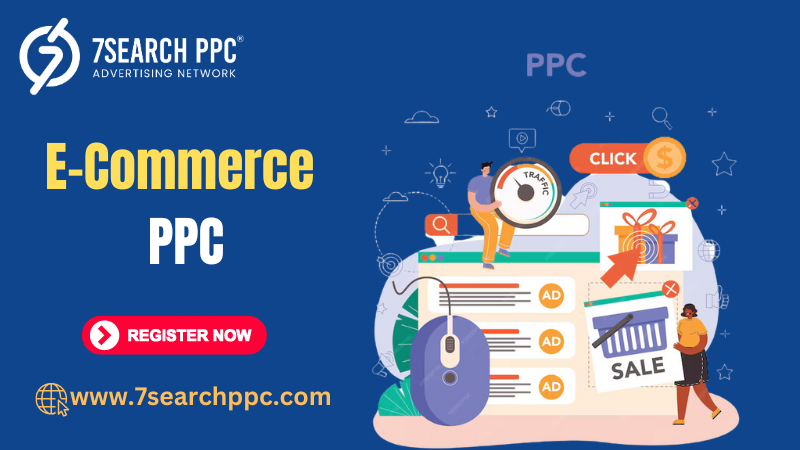|
|
Measuring the success of your e-commerce PPC (Pay-Per-Click) campaigns is essential for optimizing performance and maximizing return on investment (ROI). Here are key metrics and methods to assess the effectiveness of your campaigns: 1. Click-Through Rate (CTR)Definition: CTR measures the percentage of users who click on your ad after seeing it. How to Measure: Formula: CTR=Total ClicksTotal Impressions×100\text{CTR} = \frac{\text{Total Clicks}}{\text{Total Impressions}} \times 100CTR=Total ImpressionsTotal Clicks×100 High CTR indicates that your ad is compelling and relevant to your target audience. Why It Matters: A high CTR suggests that your ad copy and targeting are effective. However, a low CTR may indicate that your ad needs optimization. 2. Conversion RateDefinition: The conversion rate measures the percentage of users who complete a desired action (e.g., making a purchase) after clicking on your ad. How to Measure: Formula: Conversion Rate=Total ConversionsTotal Clicks×100\text{Conversion Rate} = \frac{\text{Total Conversions}}{\text{Total Clicks}} \times 100Conversion Rate=Total ClicksTotal Conversions×100 Tracking Conversions: Use conversion tracking tools in platforms like Google Ads or integrate with Google Analytics to track actions. Why It Matters: A high conversion rate means that your landing page and checkout process are effective. A low conversion rate may indicate issues with your landing page or product offerings. 3. Cost Per Click (CPC)Definition: CPC represents the amount you pay for each click on your ad. How to Measure: Formula: CPC=Total SpendTotal Clicks\text{CPC} = \frac{\text{Total Spend}}{\text{Total Clicks}}CPC=Total ClicksTotal Spend Managing CPC: Monitor your CPC to ensure it's within your budget and aligns with your ROI goals. Why It Matters: CPC helps you understand how efficiently you're spending your ad budget. High CPC may indicate competitive bidding or poorly targeted ads. 4. Cost Per Acquisition (CPA)Definition: CPA measures the cost required to acquire a customer through your PPC campaign. How to Measure: Formula: CPA=Total SpendTotal Conversions\text{CPA} = \frac{\text{Total Spend}}{\text{Total Conversions}}CPA=Total ConversionsTotal Spend Optimize CPA: Lower CPA means you're acquiring customers more cost-effectively. Why It Matters: CPA helps you determine if your PPC campaign is profitable. A high CPA can indicate that you need to optimize your targeting or ad copy. 5. Return on Ad Spend (ROAS)Definition: ROAS measures the revenue generated for every dollar spent on advertising. How to Measure: Formula: ROAS=Revenue from AdTotal Ad Spend\text{ROAS} = \frac{\text{Revenue from Ad}}{\text{Total Ad Spend}}ROAS=Total Ad SpendRevenue from Ad Evaluating ROAS: Higher ROAS means better performance of your PPC campaign. Why It Matters: ROAS helps you assess the overall profitability of your campaign. A positive ROAS indicates that your ads are generating more revenue than they cost. 6. Revenue Per Click (RPC)Definition: RPC calculates the average revenue generated per click on your ad. How to Measure: Formula: RPC=Total RevenueTotal Clicks\text{RPC} = \frac{\text{Total Revenue}}{\text{Total Clicks}}RPC=Total ClicksTotal Revenue Why It Matters: RPC provides insight into how much value each click brings. Higher RPC indicates that your traffic is more valuable. 7. Customer Lifetime Value (CLV)Definition: CLV measures the total revenue a customer is expected to generate over their lifetime. How to Measure: Formula: CLV=Average Purchase Value×Average Purchase Frequency×Customer Lifespan\text{CLV} = \text{Average Purchase Value} \times \text{Average Purchase Frequency} \times \text{Customer Lifespan}CLV=Average Purchase Value×Average Purchase Frequency×Customer Lifespan Why It Matters: Understanding CLV helps you gauge the long-term value of acquiring new customers through PPC campaigns. 8. Bounce RateDefinition: Bounce rate measures the percentage of visitors who leave your website after viewing only one page. How to Measure: Tools like Google Analytics can track bounce rates. Why It Matters: A high bounce rate may indicate issues with your landing page or ad targeting. Lowering the bounce rate can improve conversion rates. 9. Impressions and ReachDefinition: Impressions refer to the number of times your ad is displayed, while reach measures the number of unique users who see your ad. How to Measure: Check metrics on your ad platform dashboard. Why It Matters: These metrics help you understand the visibility of your ads and how well you're reaching your target audience. 10. Quality ScoreDefinition: Quality Score is a metric used by platforms like Google Ads to measure the relevance and quality of your ads. How to Measure: Platforms like Google Ads provide Quality Scores. Why It Matters: A high Quality Score can reduce your CPC and improve ad placement. Focus on improving ad relevance and landing page experience to boost your Quality Score. ConclusionTo measure the success of your e-commerce PPC campaigns, focus on a combination of metrics such as CTR, conversion rate, CPC, CPA, ROAS, and RPC. Regularly review these metrics, adjust your strategies based on the data, and continuously optimize your campaigns to achieve the best results. By closely monitoring these key performance indicators, you can ensure that your e-commerce PPC efforts are driving profitability and growth. |
Поделитесь с друзьями
Скрыть комментарии (0)
Написать комментарий
Мне нравится (0)



